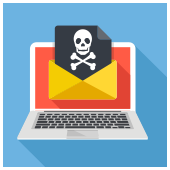 There are several ransomware decryptors now, thanks to communities of white hat hackers concerned about increasing ransomware attacks worldwide. While some of these decryptors do come with a price, the rest are free or can be availed for a minimum donation.
There are several ransomware decryptors now, thanks to communities of white hat hackers concerned about increasing ransomware attacks worldwide. While some of these decryptors do come with a price, the rest are free or can be availed for a minimum donation.
The state of ransomware in 2021 so far
Businesses need to deal with ransomware both from outside and within. On one hand, there are more cybercriminals trying to infiltrate your network. On the other hand, careless and unknowing staff can easily let ransomware enter your network. For instance, employees may be tricked into providing their access credentials in phishing sites, or they may click links to websites that upload ransomware downloaders onto their machines.
The statistics are sobering. Ransomware cost businesses more than $75 billion per year. Over the past two years, ransomware attacks have increased by over 97%. And compared to the first two months of 2017, ransomware campaigns that were initiated from phishing emails increased by 109% in the same span of time this year.
According to studies, there will be a ransomware attack targeting a business every 11 seconds in 2021. That is up from every 14 seconds in 2019, and every 40 seconds in 2016. And the trend is that the rate will continue to increase over the years.
Zombie ransomware is easy to defeat
Not every type of infection is targeted to individual organizations. Some infections may result from self-propagating ransomware strains, while others may come from cyberattackers who are hoping targets become so scared that they pay up before doing any research on how dated the strain is and how to remove it.
No matter what the circumstances of your infection are, always check the following lists to see whether free decryption tools have been released to save you a world of hurt:
- Kaspersky Lab’s No Ransom list
- Avast’s free decryption tools
- Trend Micro’s Ransomware File Decryptor
- Heimdal Security’s Free Ransomware Decryption Tools
Prevention
But even when you can get your data back for free, getting hit with ransomware is no walk in the park. There are essentially three basic approaches to prevent ransomware:
- First, train your employees about what they should and shouldn’t open when browsing the web and checking email.
- Second, back up your data as often as possible to quarantined storage. As long as access to your backed-up data is extremely limited and not directly connected to your network, you should be able to restore everything in case of an infection.
- Finally, regularly update all your software solutions (operating systems, productivity software, and antivirus). Most big-name vendors are quick to patch vulnerabilities, and you’ll prevent a large portion of infections just by staying up to date.
Whether it’s dealing with an infection or preventing one, the best option is to always seek professional advice from seasoned IT technicians. It’s possible that you could decrypt your data with the tools listed above, but most ransomware strains destroy your data after a set time limit, and you may not be able to beat the clock. And even if you do, you probably won’t have the expertise to discern where your security was penetrated.
Don’t waste time fighting a never-ending stream of cyberattacks — hand it over to us and be done with it. Call us today to find out more.

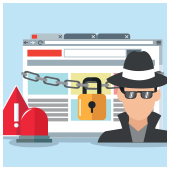 With the prevalence of cyberattacks on companies of all sizes these days, businesses cannot afford to relegate cybersecurity to the bottom of their budget priorities. When it comes to cybersecurity, even small businesses should partner with a managed IT services provider (MSP). Here’s why it’s crucial to partner with an MSP that can implement robust cybersecurity solutions for your business.
With the prevalence of cyberattacks on companies of all sizes these days, businesses cannot afford to relegate cybersecurity to the bottom of their budget priorities. When it comes to cybersecurity, even small businesses should partner with a managed IT services provider (MSP). Here’s why it’s crucial to partner with an MSP that can implement robust cybersecurity solutions for your business.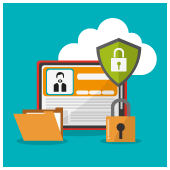 It is good to have an IT team and/or a third-party partner like a managed services provider (MSP) that helps keep your company protected against cyberthreats. It is even better to have all stakeholders be involved in preventing data breaches. Here’s how everyone can be proactive when it comes to cybersecurity.
It is good to have an IT team and/or a third-party partner like a managed services provider (MSP) that helps keep your company protected against cyberthreats. It is even better to have all stakeholders be involved in preventing data breaches. Here’s how everyone can be proactive when it comes to cybersecurity.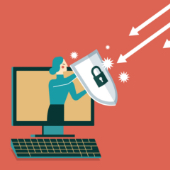 Remote work policies have become a necessity not just because of the current coronavirus crisis, but also for the ways they improve a company’s bottom line and efficiency. Yet despite remote work’s benefits, it leaves you and your company exposed to online scams and other cybersecurity threats. To defend your company and your remote workers, make sure to heed the following tips.
Remote work policies have become a necessity not just because of the current coronavirus crisis, but also for the ways they improve a company’s bottom line and efficiency. Yet despite remote work’s benefits, it leaves you and your company exposed to online scams and other cybersecurity threats. To defend your company and your remote workers, make sure to heed the following tips. Hackers are known by the general public as cybercriminals, especially with so much news about nude celebrity photos beings released to the cloud, millions of customer information being stolen across many industries, and government agencies paying the ransoms hackers demand so that the former can regain access and control of their systems. However, did you know that not all hackers are bad guys? Read on to learn more about them.
Hackers are known by the general public as cybercriminals, especially with so much news about nude celebrity photos beings released to the cloud, millions of customer information being stolen across many industries, and government agencies paying the ransoms hackers demand so that the former can regain access and control of their systems. However, did you know that not all hackers are bad guys? Read on to learn more about them.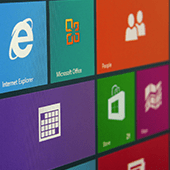 With over 150 million active subscribers, Office 365 is, unsurprisingly, on top of hackers’ minds. And now, hackers are using a technique that doesn’t even require users to give up their credentials. Learn how they do it and get protected.
With over 150 million active subscribers, Office 365 is, unsurprisingly, on top of hackers’ minds. And now, hackers are using a technique that doesn’t even require users to give up their credentials. Learn how they do it and get protected. In the cybersecurity world, an insider threat is an individual or business partner who uses company data inappropriately. Today’s companies must take proactive steps to prevent insider threats, which is why we put together some tips and tricks.
In the cybersecurity world, an insider threat is an individual or business partner who uses company data inappropriately. Today’s companies must take proactive steps to prevent insider threats, which is why we put together some tips and tricks.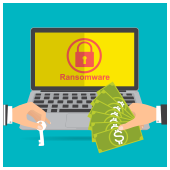 Over the last few years, different versions of ransomware have sprung up, all aimed at extorting money from your business. Before you even consider paying for the release of your data, the first thing you must always check is if there’s a free cure for the ransomware that infected your systems.
Over the last few years, different versions of ransomware have sprung up, all aimed at extorting money from your business. Before you even consider paying for the release of your data, the first thing you must always check is if there’s a free cure for the ransomware that infected your systems.